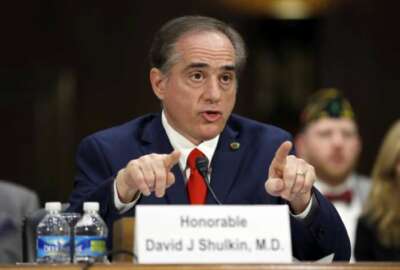

The Government Accountability Office is questioning whether the right people, skills and leadership were devoted to the Veterans Affairs Department's past efforts...
The Government Accountability Office is questioning whether the Veterans Affairs Department has the right people, skills and attention devoted to removing VA health care from its biennial High-Risk List.
GAO offered its expertise to help VA leadership address its challenges, and it has seen some progress. But it’s not good enough, and VA remains on the 2017 list.
“We are very concerned about VA’s exceedingly slow pace of progress,” Debra Draper, director of health care issues for GAO, told the Senate Veterans Affairs Committee at a March 15 hearing. “Unfortunately as of today, VA is not much farther ahead in addressing the concerns that led to its High-Risk designation than it was two years ago.”
The department’s leadership had indicated its interest addressing the High-Risk List back in 2015. VA set up a task force, working groups and a governance structure to tackle GAO’s recommendations. It also developed an action plan, but it lacked an analysis of the root causes of the department’s challenges, reasonable timelines that VA expected to complete goals and metrics by which to measure its progress.
“Even in the areas where VA has made some progress, there is a long path toward fully meeting the criteria,” Draper said.
The department had at least 100 unresolved recommendations in 2015, when GAO first added VA health care to its High-Risk List. GAO added 74 recommendations since. And currently, VA still has about 100 unresolved recommendations, a quarter of which have been open for three years.
GAO said it met with former Secretary Bob McDonald three times to discuss the High-Risk List: once to inform him that VA health care was going on the list and then to warn him the department wasn’t making enough progress.
“The third time was that they were not making progress and [Comptroller General Gene Dodaro] offered the availability or access to subject matter experts within GAO that could help them with some of their initiatives, like contracting,” Draper said. “We had a meeting in August between VA leadership and GAO subject matter experts, and unfortunately to date, they really haven’t taken us up on accessing our subject matter experts that could really help point them, in terms of best practices.”
GAO also suggested VA look to the Homeland Security Department as an example of an agency that’s made significant progress in addressing high-risk recommendations.
Yet current VA leadership has insisted it recognizes the need for urgency.
New VA Secretary David Shulkin met Dodaro and his team March 3, said Carolyn Clancy, deputy undersecretary for health for organizational excellence at VA.
“Secretary Shulkin acknowledged the significant scope of the work that remains and committed to better integrate its high-risk-related actions with the President’s priorities and ongoing VA transformation efforts,” she said. “We immediately began working with GAO to follow through on Secretary Shulkin’s commitments and to ensure continued VA collaboration with our GAO colleagues.”
Lack of training has been an underlying theme of many of VA’s challenges.
“The lack of training for schedulers, the lack of understanding of the process by their managers and in some cases, the disregard of VA scheduling policies, created a system where services have not been provided timely, and in some situations, wait times were not accurately portrayed,” Michael Missal, the VA’s inspector general, said.
Part of the confusion comes from the department’s sheer number of policies. The Veterans Health Administration had more than 800 policies two years ago, half of which had expired. It took about 340 days on average for VHA to produce or change national policies. VHA has since developed a leaner process for developing new policies, Clancy said. Stakeholders meet every two weeks to discuss policies, and there are now roughly 650 of them.
Members of the Senate VA Committee expressed their concern and reminded the department’s leadership that the VA inspector general and GAO are helpful assets, not adversaries.
“Transformation is a marathon, not a sprint,” Clancy said. “It takes several years to turn any organization around, and we’re acutely aware that most of the candidates on GAO’s High-Risk List have taken multiple years to meet that requirement. Secretary Shulkin is absolutely dedicated that we do this as rapidly as possible.”
Copyright © 2025 Federal News Network. All rights reserved. This website is not intended for users located within the European Economic Area.
Nicole Ogrysko is a reporter for Federal News Network focusing on the federal workforce and federal pay and benefits.
Follow @nogryskoWFED

